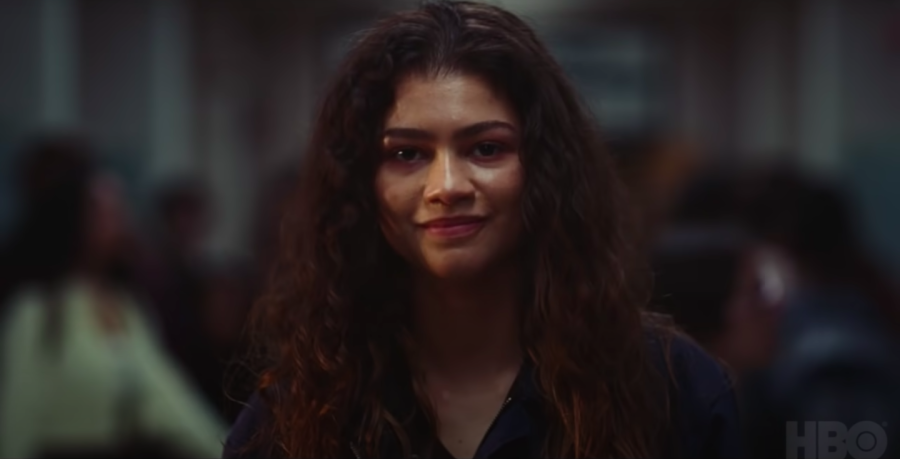Cushman: Teen Sexualization in TV Creates Dangerous Ideas About Sex
November 3, 2022
At age 13, I watched “Pretty Little Liars” for the first time. I remember staying up until 4 a.m., binging my way through almost the entire first season. The show depicts a sexual relationship between Aria, a high-schooler, and Ezra, her teacher. It didn’t take long before they became my favorite on-screen couple: the show sold a cute, romantic and forbidden love affair, which I bought and didn’t spare a second thought on how inappropriate and dangerous it was.
Because the framing of teenage sexuality on TV impacts audience sex views, show creators must exercise caution and be responsible in their depictions of it.
An All-Too-Common Problem
“Pretty Little Liars” ends with Aria and Ezra getting married, downplaying the serious nature of grooming and sexual exploitation of young people. However, “Pretty Little Liars” is not the only show guilty of framing teenage sexuality in a dangerous way.
“Riverdale” often portrays its teen characters in overtly sexual situations. Season one shows a 15-year-old Archie in a sexual relationship with a teacher in her 30s, Ms. Grundy. Grundy’s character, an elderly woman in the comics, appears much younger in the show for no other reason other than to make the relationship sexier. “Riverdale” also shows another teenage character, Betty, in a variety of sexual situations from stripping in a club of adult men to camming online as her alter-ego, “Dark Betty.” Beyond this, the show consistently frames its teen characters as sexually appealing, by focusing on their bodies and sex lives.
“Euphoria” is similar: creator Sam Levinson styles the show as a realistic look at modern teenagers facing struggles of mental illness, drug use and sex. However, the show puts teen characters in dangerous sexual situations without exploring how they would realistically affect those characters. At one point, the character Kat starts camming, and the show frames it as a journey to build confidence rather than coercion to making child porn. Jules, too, finds herself in adult sexual situations where she sleeps with older men and lies about her age for money.
When shows depict sexual storylines, we don’t portray them with the critical depth they deserve. Neither Aria nor Archie showed emotional distress from their traumatic grooming experiences, and when Betty and Kat cam, their experiences don’t highlight the negative effects on young people. These shows focus only on making teenage characters “hot” and placing them in sexual situations to sell to audiences as normal.
Teens Shouldn’t Be Sexy
Regardless of the actor’s age when playing teen characters, we shouldn’t place underage characters in situations that push the audience to view them as sexual — it’s dangerous and pedophilic. “Riverdale” and “Euphoria” show young characters like Archie and Cassie in a way that pushes viewers to think of them as desirable, which invokes ideas similar to specific sexual fantasies.
The idea of Betty, a girl next door archetype, having an overtly sexual alternate personality who engages in risky sexual behavior has parallels with the fantasy of good-girl-gone-bad. Teacher-student sexual relationships also invoke a specific fantasy, which makes an appearance on many porn sites, and teen TV only promotes it. In fact, teen TV’s problematic portrayals of sex promote sexual fantasies involving minors as sexual prospects who cannot legally consent.
Effect on Young Audiences
Teen TV shows broadly appeal to young audiences: “Riverdale’s” season two premiere garnered the CW its best teen ratings since 2012, and “Euphoria” won several Emmy’s. Given these shows’ large young audiences, promoting positive ideas about teen sexuality is critical. Instead, these shows promote dangerous ideas about teenage bodies, sexuality and safe sexual relationships.
Sexualization in mainstream and social media can cause higher rates of depression, self-objectification and decreased self-esteem, especially among young girls. It can even impact young people’s sexual self-image. University of Utah Professor Ana Antunes explained this comes from seeing teenagers become “adultified” on TV, whether through casting or very sexual plotlines. This adultification creates unrealistic expectations of what bodies and sexual relationships look like, and she continued to say that because young people’s brains are still developing, they may have a harder time “discerning fantasy from reality.”
This confusion and anxiety about what sex should look like surely compounds when they see their favorite character placed into sexual situations with adults. Normalizing grooming relationships, or portraying them as sexy, leaves impressionable young viewers vulnerable to grooming in their real life. Since many of these teen viewers actively use the internet, the threat is more substantial.
Research shows that young adults poorly understand grooming behavior and struggle to perceive risk in online behavior as a result. The media our teens consume treat grooming as adventurous romantic trysts rather than sexual victimization, which reinforces the lack of cultural awareness about grooming dangers.
Depicting teenage sexuality on TV can be good. Growing up, I watched MTV’s “Awkward.” One episode covered a character’s decision to have sex for the first time, debunking the myth of the “magical first time.” That portrayal of disappointment and unmet expectations about losing her virginity helped me develop realistic expectations for my own initial sexual experiences.
Value can result from depicting teenage sexuality in media, but only when it’s framed the right way. Unfortunately, many modern teen programs don’t do that — they sexualize teen characters and damage audience views. Media depicting teenage sexuality needs to frame sex in a healthier way to protect younger audiences.








